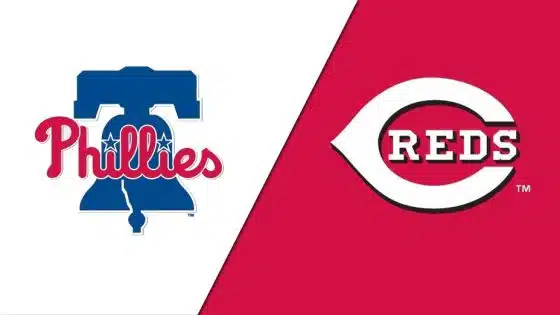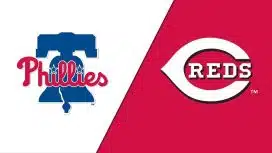By Tal Venada, Sports Talk Philly Contributor
For the Philadelphia Phillies faithful, their aces and most stars receive cheers, but their sluggers and closers will always fail to achieve 99 percent success. And power hitters mostly shoulder the blame with the coaches, skipper, and general manager.
No Early Title, No Praise:
Although huer (French for boo) is correct, perhaps, for hockey, baseball has added the English word boo to their Canadian brethren’s vocabulary along with the game’s other terminology. Now, when a Toronto Blue Jay boots a hard-hit grounder, he hears a chorus many Phillies fans will recognize.
IN OTHER WORDS
“They (Expos fans) discovered 'boo' is pronounced the same in French as it is in English.” – Harry Caray
According to Richard Rys of Philadelphia Magazine and Johnny Goodtimes of Philly Sports History, heckling dates back to the ancient Greeks. And jeering or cheering playwrights was almost a civic duty.
Roman gladiators, unfortunately, experienced more than hissing from unhappy patrons. Yeah, death! As for booing, it began in early 19th-century England: the groaning of cattle.
During his time here, fans were rougn on Al Simmons, the best hitter on the Philadelphia Athletics. His lowest average was .308 during his rookie campaign with highs of .392 (1927), 36 bombs and 165 RBIs in 1930. Even so, spectators razzed him about his unorthodox batting stance with his front foot in the bucket.
In ‘27, when Harry Donnelly, 26, began jerring more players, Connie Mack had him arrested because he had heckled “Good Time” Bill Lamar, a .300 hitting outfielder, out of town via a made-necessary trade. Yes, Mack succeeded in silencing this so-called A’s fan.
In the 30s, the Kessler and Ziegler brothers (cousins) booed the home team for every inning of every contest. Moreover, the Kesslers sat on opposite sides of the field. But Mack’s lawsuit and offer of free season tickets weren’t the remedies he hoped for.
During the Great Depression, President Herbert Hoover got an earful from the locals during the 1930 World Series. Basically, fans everywhere boo and sometimes vocalize vulgar displeasure. In fact, the name boobirds appeared first in Cleveland in 1948.
Today, an error, awful pitching, or a failed at-bat to end a potential rally can set off a rain of boos. That stated, some locals expect closers at home to save every opportunity and want to replace him after an extremely poor outing. Sluggers, though, disappoint some spectators if they don’t homer in the game they attend. The birth of a boobird?
Del Ennis (the original Whiz Kid):
In 1950, the Philadelphia-born left fielder hit his high in long balls and RBIs and had his second best average since his rookie summer (.313 in 1946): a career year. But the lows for his first 12 campaigns were 12 home runs (1947); 73 RBIs (1946); and a .260 average, a -1.0 fWAR and a 93 wRC+ in 1956, his final Phillies 154: traded!
Del Ennis:
- 1950: 153 Gms., 654 PA, a .311 Avg., 31 HR, 126 RBI, a 5.0 fWAR and a 140 wRC+
- 1951: 144 Gms., 602 PA, a .267 Avg., 15 HR, 73 RBI, a 1.7 fWAR and a 107 wRC+
Winning can be a problem for players and fans alike. And Robin Roberts after 1950 and Cole Hamels after 2008 felt this would be the first of many Fall Classic appearances. However, the faithful came to the same conclusion, which is mostly wishful thinking. Players, eventually, realize baseball is 40 percent luck according to Charlie Manuel.
When you combine that thinking with a major dropoff in performance, his broadcaster’s nickname of “Ennis the Menace” wasn’t as effective in ‘51. And the locals’ razzing began. Well, no championship fueled unhappiness, and many paying customers didn’t realize most stars can’t produce top-tier numbers every season.
In a 1955 contest with three Ennis’ bombs, the faithful booed him for popping out in his second at-bat. Even worse, he once made a three-run error that tied another game’s seventh frame, but that heavy disparagement turned into cheers with a rooftop blast in the bottom of the eighth. Before the homer, his teammates wanted to fight the 30,000 fans.
Dick Allen:
While Mike Schmidt and Pat Burrell heard frequent disapproval, it was less than Ennis received. But Allen due to 1964’s racial tensions had that extra factor long before the collapse with 12 to play. No, the first sacker produced a .438 average with three long balls, two triples, five doubles and 12 RBIs in those 12 contests.
Throwing batteries at Allen probably cemented our legend of being tougher than New Yorkers and Bostonians. That stated, I covered many other details in my recent article “Phillies: Dick “Crash” Allen’s HOF Chances in 2020.” However, the not-elaborated “PETE” in his “dirt doodlings” was clubhouse assistant Pasquale "Pete" Cera.
Mike Schmidt:
Unlike his fiery teammate Larry Bowa, Schmidt had given the locals a not-caring impression, but eventually many realized otherwise after his retirement. But one exception was when he donned a long wig and sunglasses after making unflattering comments about Phillies fans in Montreal. Result: a standing ovation!
At the time, though, Schmidt was having the roughest patch of his career since his rookie year of 1973. He was hitting .236 with nine home runs and 32 RBIs through June’s end before finishing 1985 at .277 with 33 round trippers and 93 RBIs. Perhaps, that moment did more than defuse the situation; maybe, it motivated him to regain his form.
Just a guess: The Phillies playoff woes from 1976 through 1979 and Schmidt’s calm under pressure were the foundation for the heckling. Ergo, dashed expectations. But did hitting his 500th four-bagger silence some of his detractors?
Pat Burrell:
After the entire J.D. Drew episode, the Phillies drafted Burrell with the first overall pick in the 1998 MLB Draft, and with a nickname like Pat the Bat expectations were sky-high. But if my memory serves me correctly, the faithful made comparisons to Drew favoring him over Burrell: greener pastures elsewhere.
J.D.Drew:
- *1999: 104 Gms., 430 PA, a .242 Avg., 13 HR, 39 RBI, a 2.5 fWAR and a 95 wRC+
- 2000: 135 Gms., 486 PA, a .295 Avg., 18 HR, 57 RBI, a 3.8 fWAR and a 126 wRC+
Pat Burrell:
- *2000: 111 Gms., 474 PA, a .260 Avg., 18 HR, 79 RBI, a 0.5 fWAR and a 108 wRC+
- * Rookie year.
Besides those expectations, he manned left field and wasn’t a defensive standout, plus he was a streaky hitter like most regulars. Moreover, his strikeout high was 162 in 2001, and it set the tone for his following summers with a chorus of displeasure from spectators. But the boobirds rode Schmidt more.
Jim Thome:
So far, the first baseman was the exception to the rule because he produced the expected stats. And he immediately became a fan favorite, plus his blue-collar approach and likeable personality only added to his appeal. Like Chase Utley, he could do no wrong in the faithful’s eyes.
Ryan Howard:
When he had launched 58 bombs before winning a World Series in his second postseason, he satisfied the fan base, and being likeable only made it more difficult to boo him. Plus he hammered 45 blasts or more to his resume for the following three years after his 58 to go with a ring and an MVP Award.
Unfortunately, Father Time slowed him down, especially, because he had been 25 as a rookie. And supporters expected production based on his $25 million per 162. However, Philly spectators welcomed him back, like they did with Ennis, Allen and Schmidt.
Rhys Hoskins:
After producing 18 long balls and 48 RBIs in a third of 2017 (50 contests), locals felt they had another monster in the lineup’s middle. And even though those statistics for 150 games project to 54 home runs and 144 RBIs, most fans –I believe– didn’t anticipate those numbers for 2018.
In ‘18, the first sacker doubled his RBIs to 96 with 35 round trippers. And he had been on pace for 36 four-baggers and 106 RBIs after 2019’s first half, but he struggled after the All-Star break to September’s end. Now, he could be a target if he struggles in the first 10 contests.
During the offseason, one picture emerging was to trade him now while he’s worth something. Caution: Ennis came back from his 1951 campaign to have an exemplary career. No, Phillies GM Matt Klentak won’t move him based on a bad 2.5 months, but many paying customers aren’t as forgiving.
Bryce Harper:
After signing a $330 million deal, the right fielder had a solid ‘19: .260, 35 blasts, 114 RBIs, a 4.6 fWAR and a 125 wCR+ with hustle. He has the ingredients to be a fan favorite for many summers. Moreover, he has impressed many with his defense, his arm and his base running.
He’s a smart player who takes the extra base and possesses leadership skills. Like Howard, though, he’ll age and the contract will eventually be an anvil. Yes, he already has detractors, and that number will probably grow when he hits 32 years of age.
I have one question for those who have given up on Hoskins after his last 2.5 months. If getting a decent return for him from another club is your –your– thinking, the Washington Nationals need a first baseman, and he’ll hurt their chances to win the National League East, no? Having second thoughts?
NEXT:





